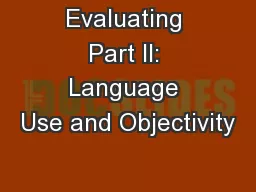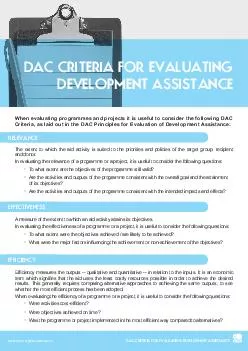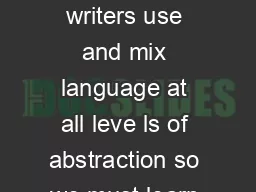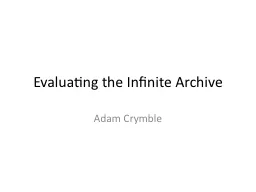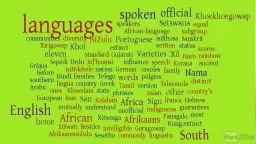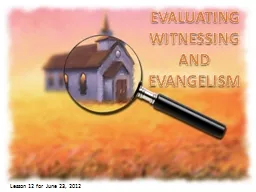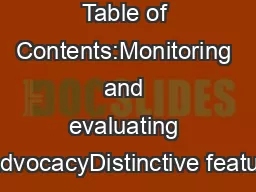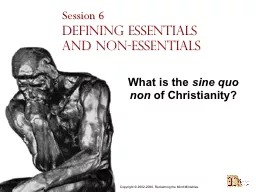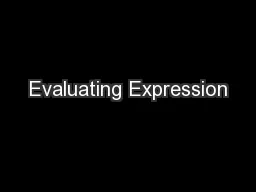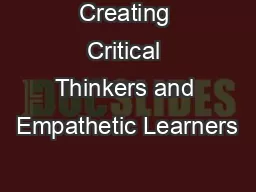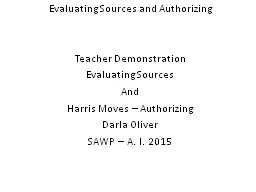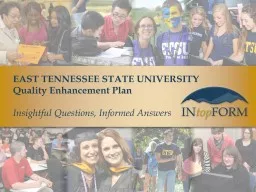PPT-Evaluating Part II: Language Use and Objectivity
Author : tatiana-dople | Published Date : 2015-10-12
Critical Thinking Crash Course What makes a source objective what is objective in the context and in the field Objectivity in the overall American academic context
Presentation Embed Code
Download Presentation
Download Presentation The PPT/PDF document "Evaluating Part II: Language Use and Obj..." is the property of its rightful owner. Permission is granted to download and print the materials on this website for personal, non-commercial use only, and to display it on your personal computer provided you do not modify the materials and that you retain all copyright notices contained in the materials. By downloading content from our website, you accept the terms of this agreement.
Evaluating Part II: Language Use and Objectivity: Transcript
Download Rules Of Document
"Evaluating Part II: Language Use and Objectivity"The content belongs to its owner. You may download and print it for personal use, without modification, and keep all copyright notices. By downloading, you agree to these terms.
Related Documents

